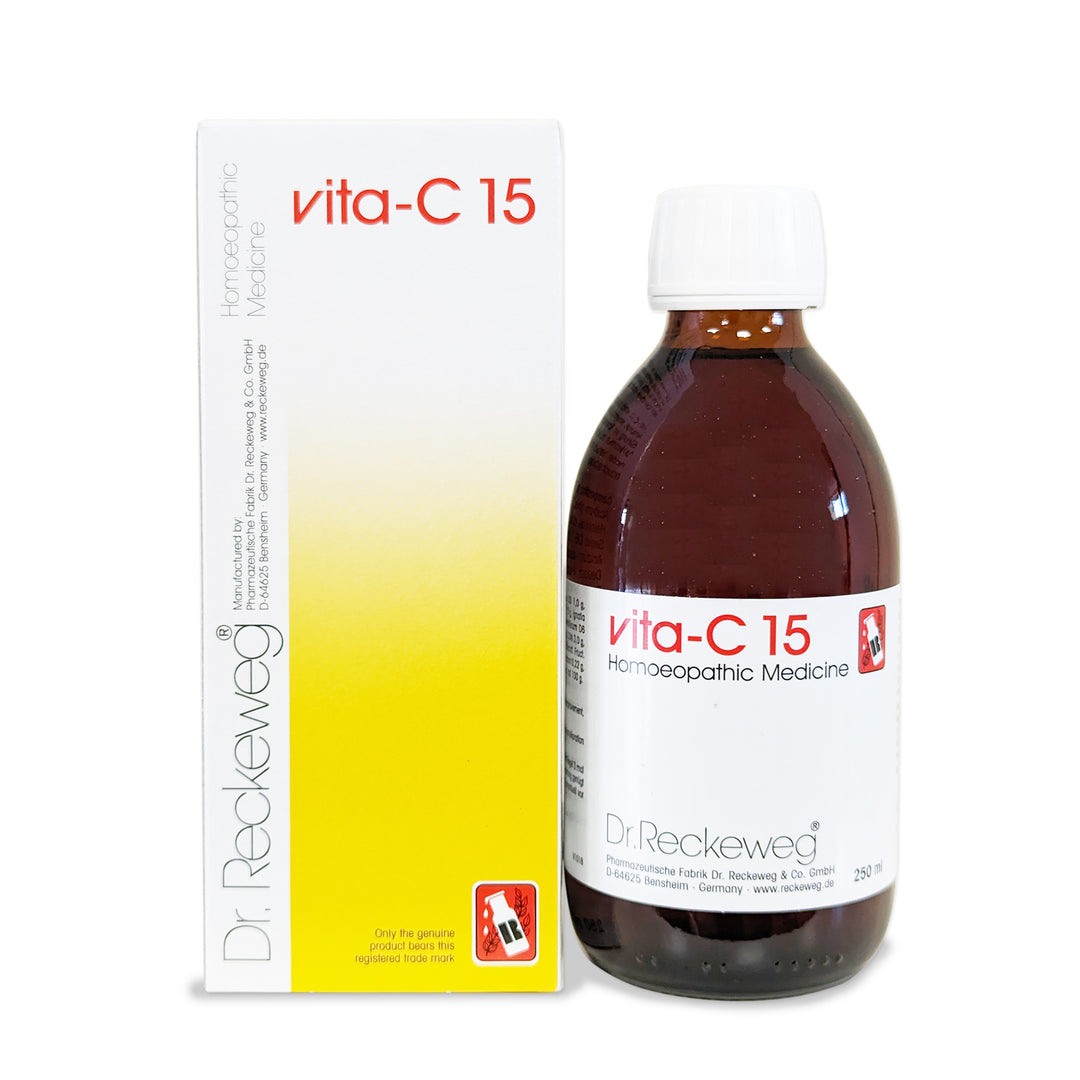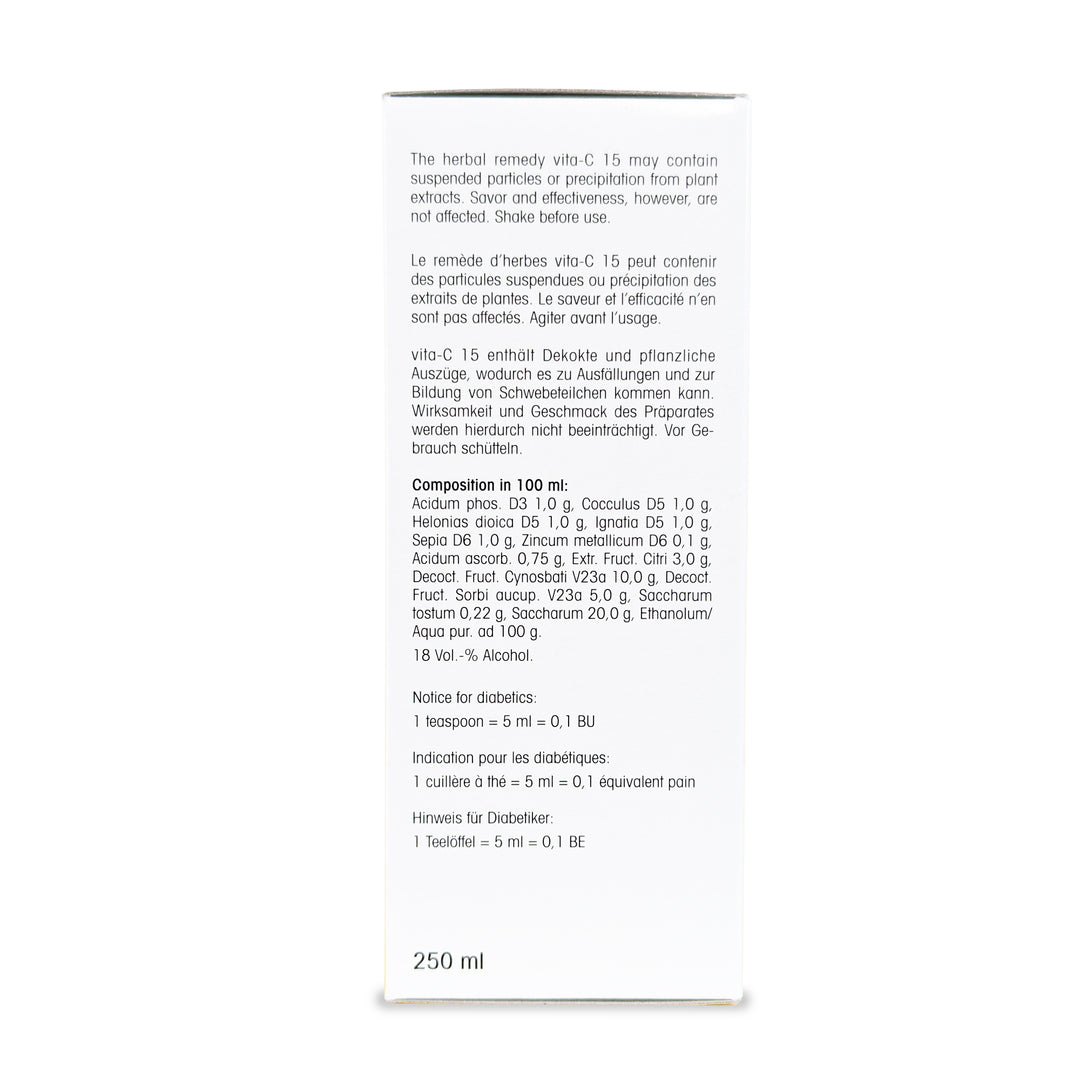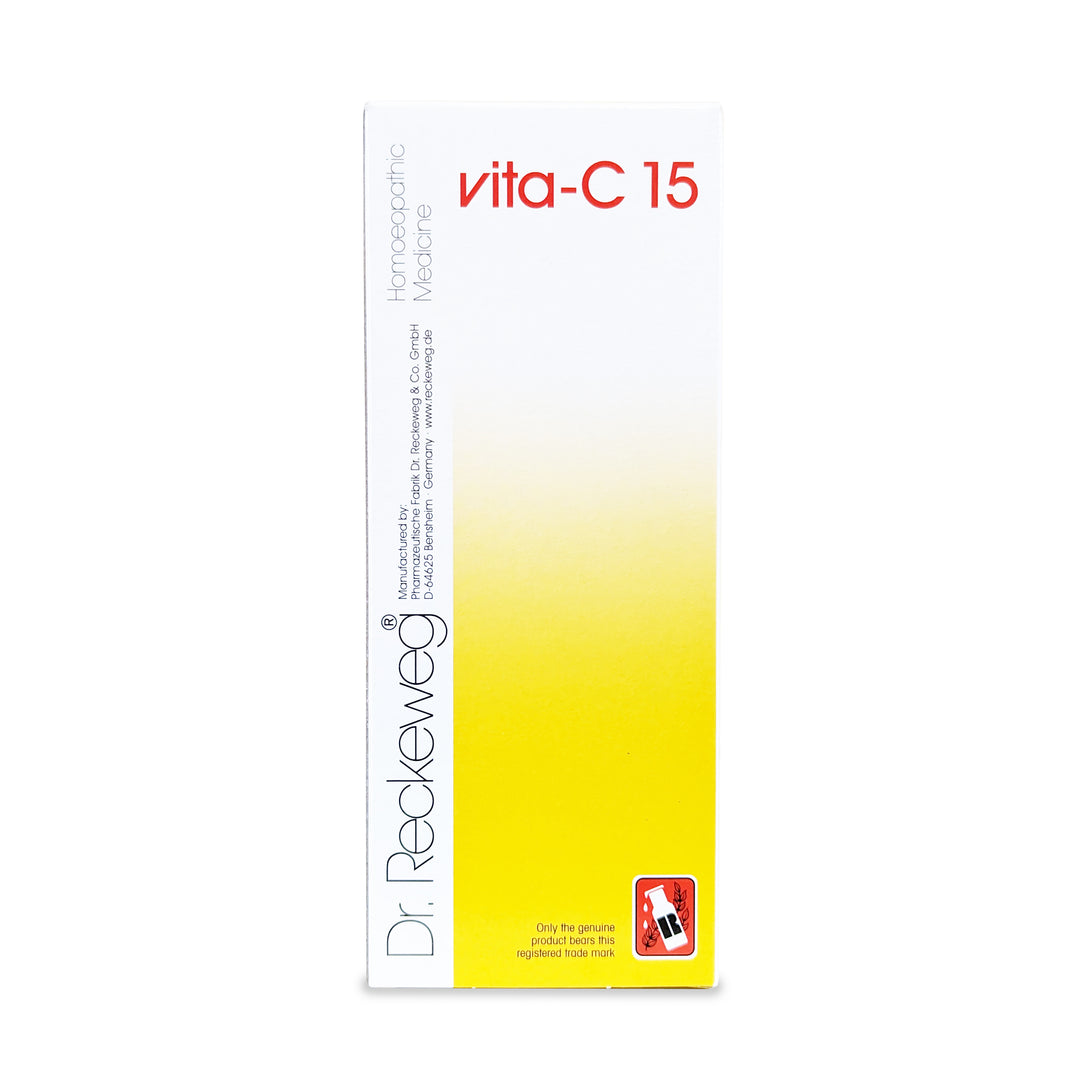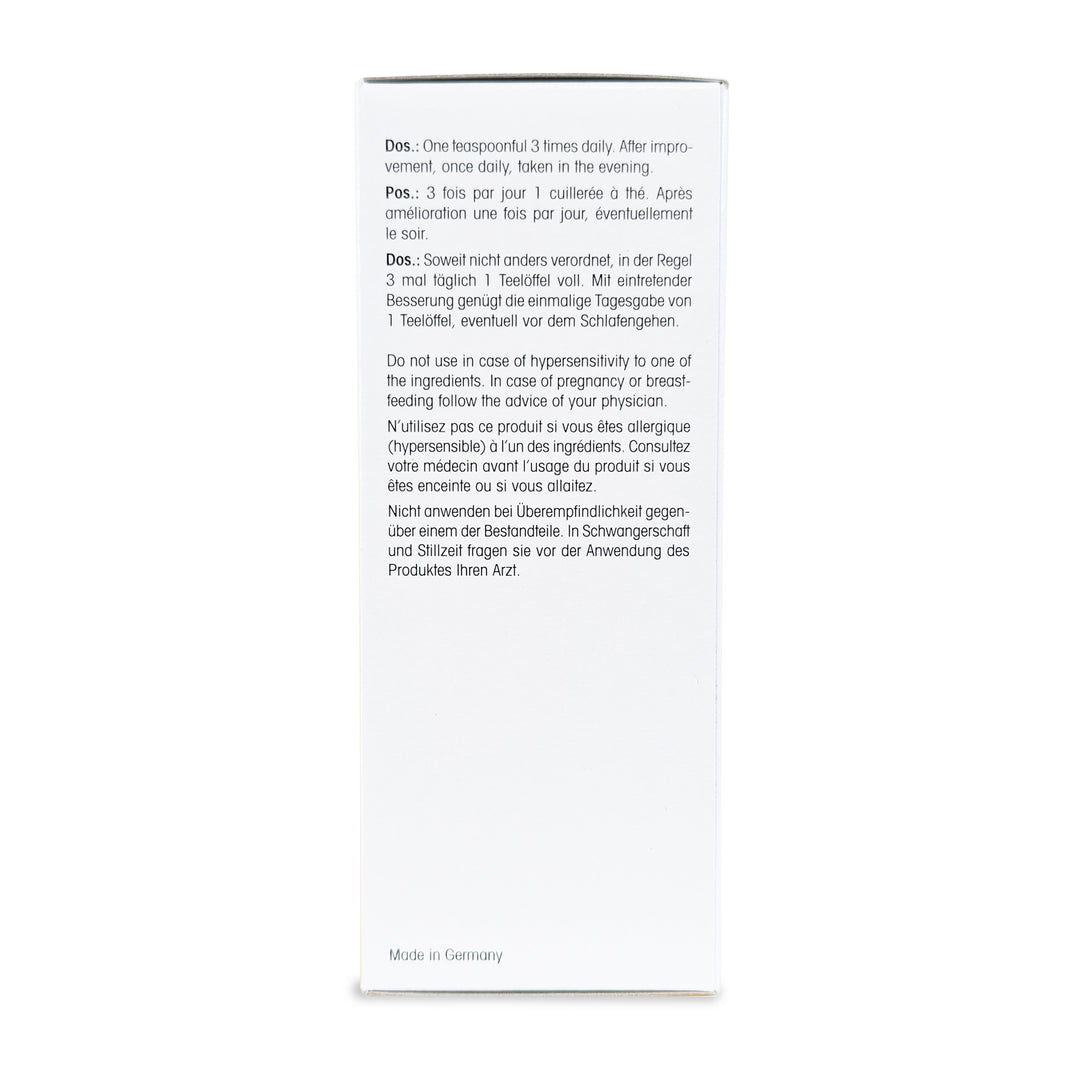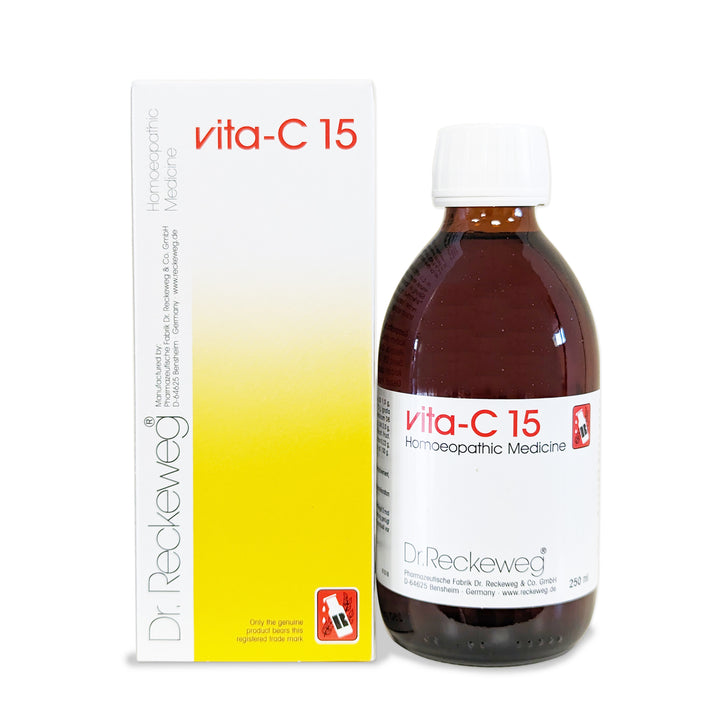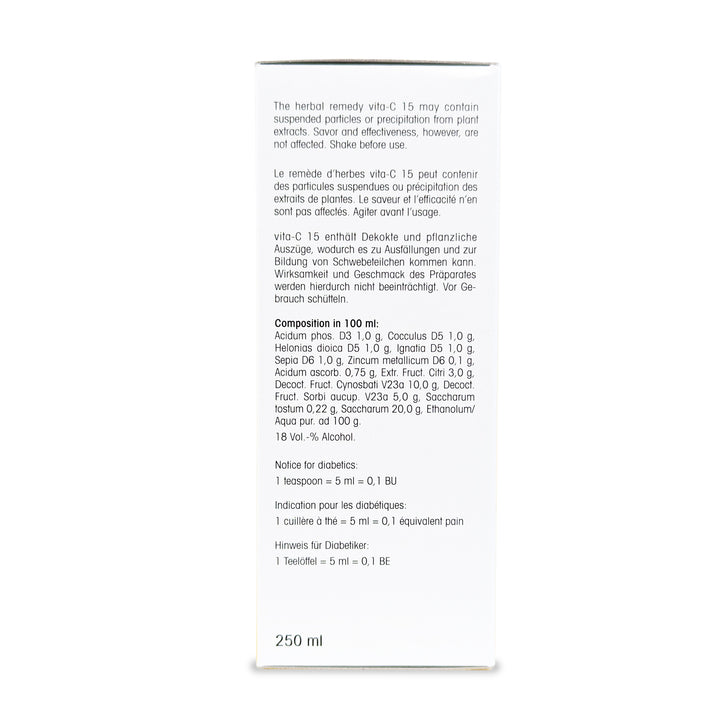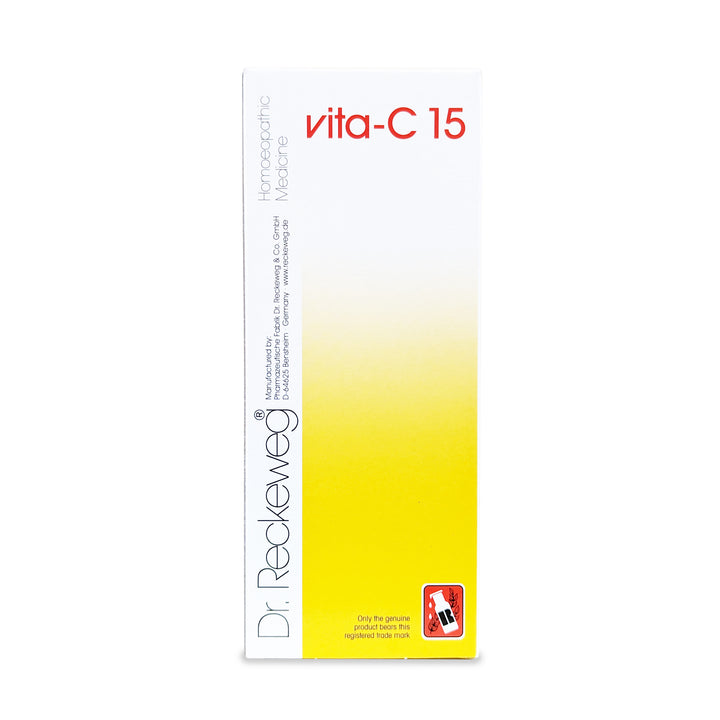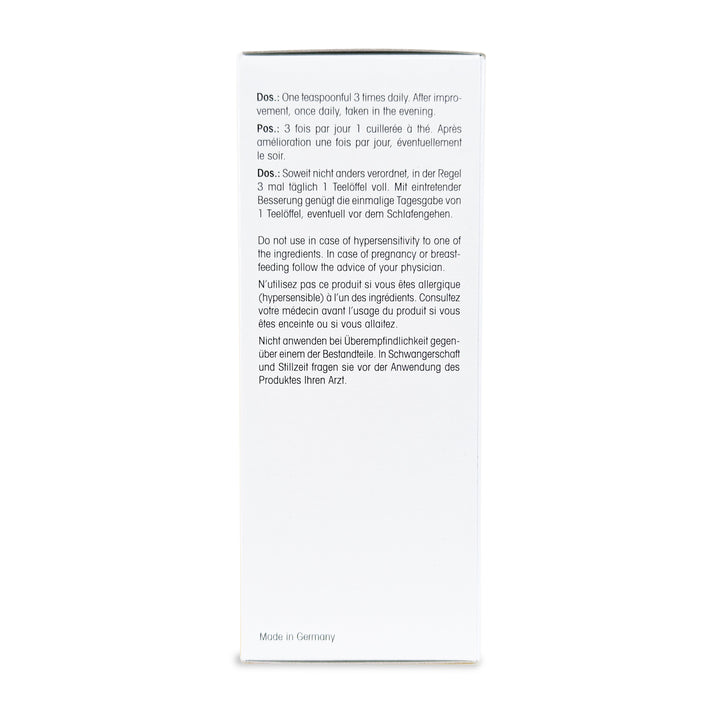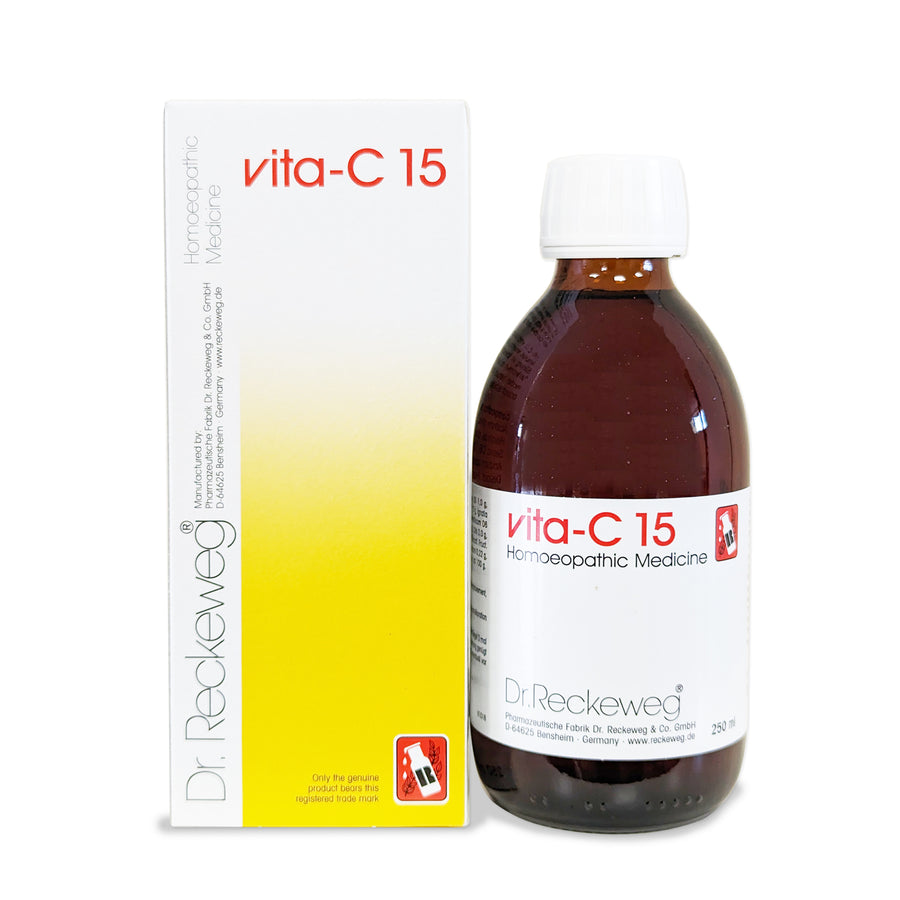VITA-C 15 FORTE
Tonic
Ingredients: Acidum ascorbicum, Decoctum Fructuum Cynosbati, Decoctum Fructuum Sorbi aucupariae, Extractum Fructuum Citri, Saccharum, Saccharum tostum, Extractum Ginseng, Acidum phosphoricum D3, Cocculus D5, Helonias dioica D5, Ignatia D5, Sepia D5, Zincum metallicum D6, Ethanol, Aqua pur.
Due to a larger enrichment with 0.5% of ascorbic acid, it is an excellent cellular as well as humoral activator of the metabolism. Its full tonifying and vitality-stimulating effect has been obtained only after adding the Ginseng.
Mode of Action:
Considering it pharmacologically, Ginseng contains glucosides, panax acid and an essential oil Panacen, vitamins B1 and B2, estrogenic and sexually stimulating components as well as a glucoside Ginsenin, with a sympathotrophic effect, and mineral components with remarkably high content of sulphur (approx. 0.15%). Probably the tonic effect can be explained with the harmonic interaction of the partial components. However, we attribute the tonifying effect so frequently mentioned by enthusiastic therapists to the content of vitamin B1 (thyamine) and B2 (riboflavine) acting together with the L-ascorbic acid on the most important centres involved in stress situations.
A) Thyamin acts on cells with an elevated need of carbohydrates (nerve cells), cells with a metabolism based mainly on pyruvic acid (cardiac muscle cells), and nervous tissue that liberates acetyl-choline as the active substance, which transmits the nervous impulses from one nerve to another or on to the effector. Thyamine there inhibits the cholinesterase and increases the effect of acetyl-choline, which is very important, as this provokes the splitting up of the highly effective acetyl-choline into much lesser effective choline and acetic acids. As this enzyme has a very high ratio of velocities, the duration of the effect on acetyl-choline is very short.
B) Riboflavine can be found in a large amount in the retina and most likely takes part in the process of seeing. Furthermore, it acts in different enzymes, such as cytochrome dehydrogenase, aminooxidases, and in the enzymes responsible for cellular respiration. Its presence in the retina seems to be the most important factor, as during stress situations it has been noticed that there is a decrease of the visual faculty, fogginess and irritations of the eye. So a well-timed supply of the corresponding vitamin prevents a premature decrease of its level.
C) L-ascorbic acid is the activator of the entire cellular metabolism, including cellular as well as humoral processes, and becomes the real physiological tonic due to its tonifying and vitality-increasing effect, taking part in steroid-hormonal synthesis. Vitamin C has great importance during stress situations. When, during stress, there is an increase in the production of steroid hormones, the Vitamin C level in the suprarenal cortex falls, and reactions of adaptation cannot take place anymore due to the reduced hormonal synthesis. We considered this known fact when we increased the Vitamin C content and dosed it to prevent any foreseeable deficiencies.
D) The Ginseng's high content of sulphur is undoubtedly a positive factor for the energy exchange of the cells. It is a component of several proteins, e.g., lactalbumin, based on amino acids containing sulphur such as cysteine, a semi-essential amino acid, which is the main carrier for sulphur in the protein molecule. Together with cysteine as intermediate catalysts, they form a reducing system of great importance to the cellular energy exchange; because, being used as a catalyst, its task is to absorb and eventually give off again the hydrogen liberated during dehydrogenation, and so allow a gradual release of energy.
Dosage:
We recommend VITA-C 15 FORTE be taken prior to expected stress situations. To achieve a remarkable invigoration of the nervous system, we advise following a treatment with two daily doses (morning and evening) for 6 days and continuing with one daily dose for about three weeks.



